700 BC – AD 43
The influx of ideas, commerce and new technologies grew stronger in Iron Age Britain with the continued infiltration of mainland Europeans, who we now call Celts.
“The Celts were a group of people loosely tied by similar language, religion, and cultural expression. They were not centrally governed, and quite as happy to fight each other as any non-Celt. They were warriors, living for the glories of battle and plunder. They were also the people who brought iron working to the British Isles…”
– Britain Express.com
…particularly the beginning of smelting iron ore to produce strong iron weapons, tools and artefacts, which made everyday life easier than it was before.
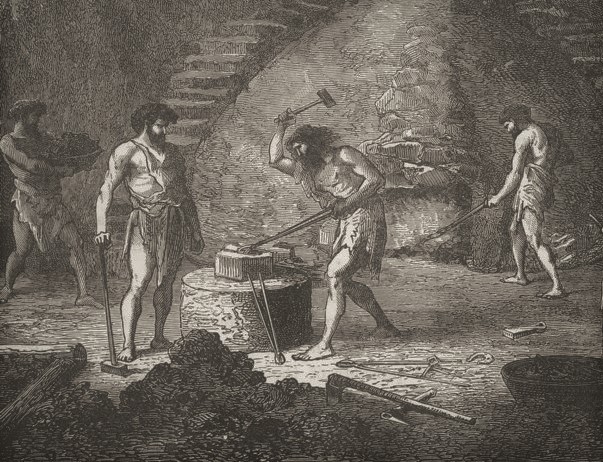
The Parisi
The Celtic tribe of the Parisi lived in the East Riding of Yorkshire, which are thought to be linked with similar tribes in France because of their distinct burial ceremonies.
They were predominantly farmers and would have had iron ploughs (as opposed to previous ploughs that were basically sticks pulled along the ground) that allowed churning of deeper and harder earth, and so were able to farm and inhabit rougher terrain more easily. It might have taken up to eight oxen to pull the heavy plough, however, and this is why they farmed long straight furrows of earth; so they didn’t have to turn around as often.
The Parisi lived in large round houses with a thatched conical roof and wattle and daub walls, decorated with animal skulls and practical items such as pots, buckets and brooms. Above a central fire hung a cauldron for cooking and straw beds surrounded the outer walls. A loom for weaving complex fabric blankets and clothing would have stood in one area and they may have had separate houses for baking bread and storing meat and grain. The villages were surrounded by fences or palisades with a gated entrance to protect those inside from attack.

Middle Iron Age
In around 300 BC, in the Arras region near Market Weighton, there lived an elite aristocracy who ruled the Celtic Parisi tribe of the East Riding of Yorkshire. A warrior king, his beautiful and powerful queen and other horsemen and charioteers controlled the ebb and flow of iron and bronze in the East Riding, blocks of which were part of the currency of the era, along with horses and livestock. They installed armies along the borders to protect their home from neighbouring clans, namely the Brigantes who occupied most of Yorkshire and northern England, and bitter battles raged in the meandering hills.

The Parisi farmed the chalk hills of the Yorkshire Wolds and vast sites for iron and bronze production spread along the Walling Fen in the Foulness Valley around North Cave all the way up to Barmby Moor near York. Bronze working sites were also based at Wetwang and Rudston, and along the flooded Hull Valley. These workers were artists producing some of the finest iron and bronze brooches and beautifully decorated swords for miles around, and the king and queen had the best of the best.
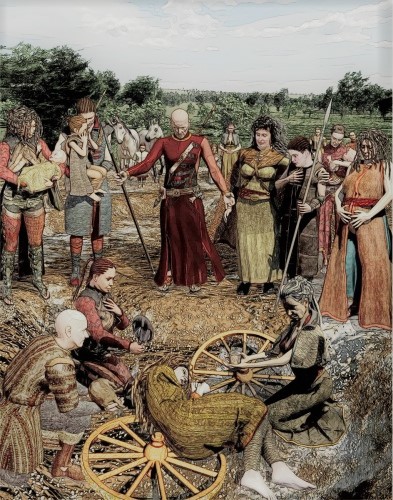
Is this true? We don’t know for sure, but what we do know is what archaeologists have found in the ground.
A cemetery of around 100 square barrows, dated 400 to 200 BC was one of the first to be discovered at Arras near Market Weighton in 1815, and gives its name to what we now call the Arras culture, which is thought to be the Parisi tribe. Other burial sites have been found at Pocklington, Scorborough, Wetwang and Rudston, all with a unique way of burying their dead when compared to most of the UK at that time.
At Arras, the King’s barrow contained the remains of an old man lying on his side with two horses heads beneath the iron inner wheels of a chariot, the iron and copper lynch pins and harness fittings being what was left of the wooden frame of the chariot. Two pig skulls were laid at his side.
 The queen’ barrow contained a lady adorned with jewellery, namely a long necklace of blue and white glass beads, bronze armlets, rings made of amber, bronze and gold, a disc pendant with coral decoration and a coral brooch.
The queen’ barrow contained a lady adorned with jewellery, namely a long necklace of blue and white glass beads, bronze armlets, rings made of amber, bronze and gold, a disc pendant with coral decoration and a coral brooch.
There was also a grave of a lady found with chariot wheels laid beneath her and an iron mirror behind her head, and another grave of a man buried with a chariot and a bronze shield.
Skipsea Castle

Skipsea Castle was built by the Normans in around 1087 and this was built on a huge mound dating to the Iron Age. Thought to be a burial mound, this has been identified as the largest Iron Age monument found in Britain.
In the middle Iron Age, the Hull Valley was completely flooded, as was the Walling Fen and River Foulness, along which sites of iron production have been found in the form of iron slag, which is the by-product of iron smelting, and furnaces used for the process. The flooded Foulness valley would have had access for boats from the Humber, as confirmed by the boat found at Hasholme, which is known as the largest surviving log-boat in the UK. Now preserved at the Museum Quarters in Hull, the boat is 42.2 ft long and would have been used to carry cargo such as iron ore, timber, grain or meat.
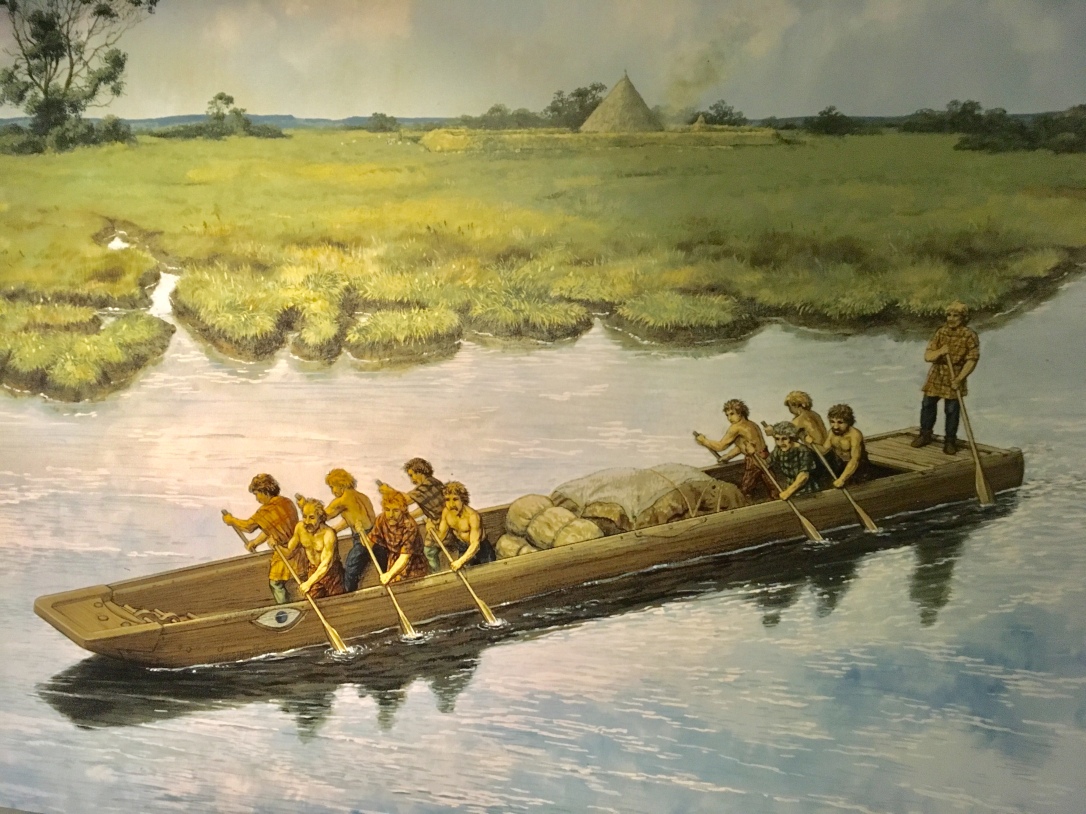
Pocklington is another site of major importance with archaeologists discovering 164 burials and 74 square and round barrows as recently as 2014 onward. The site revealed clear demarcations between social classes, with the elite buried in a separated area from the riff-raff who might scupper their chances of a decent afterlife.
In this area, people were buried with swords and shields and intricately carved jewellery such as brooches and bangles. In one man’s grave a chariot was carefully placed with the pole passing between the legs of two horses, indicating that he may have been a chieftain or great warrior.
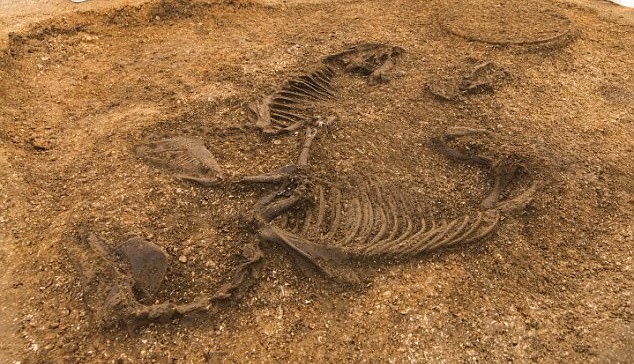

A young man was buried with a broken sword and spearheads lodged along his spine, which had been thrown at him while he was in the ground. Could this have been a way to ensure he gets to the afterlife that he so deserved; a way to release his spirit? One thing is certain – burials were not simple affairs and the way in which one was buried was believed to be of great importance for the next stage of the spirit’s journey.
Danes Dyke

A little further afield at Danes Dyke near Bridlington, it is thought that embankments constructed in the late Bronze Age were modified and used throughout the Iron Age (and onward by the Romans) by settlers atop the Flamborough area. Back then, the dyke or huge defensive ditch, stretched from the remaining ‘Danes Dyke’ area all the way across the land through to Bempton cliffs, leaving the land in the middle (Flamborough) completely formidable to attack, protected by the sea on one side and deep ditches on the other. So far, only one square barrow has been found to support this evidence, although it is noted that this is a completely man-made ditch, albeit with a natural opening at the beach at the current Danes Dyke.

Late Iron Age
“There appears to be further influx of people who go towards forming the Parisi tribe that is encountered by Rome in the following century… [possibly] formed by the Parisii tribe of Gaul. It is probably also they who occupy the Petuaria region (Brough), the ‘fourth’ region of the Parisi territory, which is handy for its coastline, making it an ideal place for new arrivals to land and settle.”
Historyfiles.co.uk
By the end of the Iron Age, the Parisi chieftains controlled the wealth of the area via iron production and pastoral farming; the amount of horses, weapons and land would have ensured their status over the local peasant villages and beyond. Their trading links would have spread throughout Britain and Europe via the Humber with a ferry terminal at Petuaria and North Ferriby, and they had good trading relationships with the Corvielltauvi, south of the Humber.

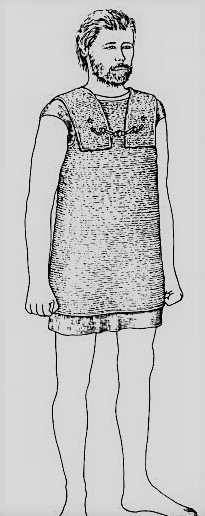
East Yorkshire was home to artisans working with precious metals and stones, producing intricately carved weapons of swords, scabbards, spearheads, shields, helmets and even iron mail armour for protection, which would have required great skill and knowledge to produce.
Textiles were more sophisticated and clothing for the elite would have reflected their wealth and power, with added finery such as intricate brooches, beads, pendants, rings and torcs, which were solid armlets or neck bands made of twisted precious metals like gold or bronze. The status of an individual could be clearly seen by the torc they wore around their neck or upper arm.

They also carved statues in the form of men with swords slung over their backs, possibly as decoration or for some kind of ritual offering to the Gods, as some have been found decapitated. The one pictured below was found in a garden in Withernsea. He’s carved in chalk and has a sword on his back.

In 2002 a cache of five swords with hilts and thirty three spearheads wrapped in animal skin were found by metal-detectors in South Cave. Dated to around the time of the Roman conquest in East Yorkshire, around AD 70, they are thought to have been buried as a secret horde if needed at a later date, or as a ritual offering to the Gods. The swords were around 150 years old at the time of burial and were each made of intricately designed copper alloy with raised patterns and enamel, horn, antler and whale ivory inlays and pommels.
With the Romans on their way, elite gatherings must have talked tactics on how to deal with the encroaching army and how best to survive and move forward economically and freely in an ever changing world.
After three centuries of occupying the hills of the Wolds and the valleys of Holderness, what was in store for the Parisi next? 
